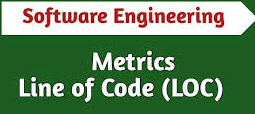UGC NET Exam > UGC NET Notes > Size Oriented Metrics
Size Oriented Metrics - UGC NET PDF Download
LOC Metrics
LOC (Lines of Code) metrics are among the earliest and simplest methods used to gauge the size of a computer program. They are commonly employed to assess and compare programmer productivity by normalizing quality and productivity measures relative to the product's size.

Here are some key points about LOC measures:
- LOC serves as a normalization value in size-oriented metrics.
- This method originated during the era of FORTRAN and COBOL programming.
- Productivity is calculated as KLOC (thousand lines of code) divided by EFFORT, with effort measured in person-months.
- Size-oriented metrics vary depending on the programming language used.
- Since productivity is based on KLOC, assembly language code is considered to have higher productivity.
- LOC measurement requires a level of detail that may be impractical.
- More expressive programming languages tend to show lower productivity.
- The LOC method is not suitable for projects involving visual (GUI-based) programming, as GUIs use forms that are not measured by LOC.
- Consistency in LOC counting methods across organizations is necessary, as practices vary (e.g., some count only executable statements, some include useful comments, others do not).
- LOC metrics are not universally accepted.
Various additional metrics can be derived from the LOC/KLOC count of software, including:
- Errors per KLOC
- Cost per KLOC
- Defects per KLOC
- Pages of documentation per KLOC
- Errors per person-month (PM)
- Productivity = KLOC per person-month (effort measured in person-months)
- Cost per page of documentation
Advantages of LOC:
- Simple to measure
Disadvantages of LOC:
- Limited to measuring code size, not applicable for specifications.
- Reflects only one aspect of size (length), ignoring functionality and complexity.
- Poor software design may lead to excessive lines of code.
- Language-dependent.
- Not easily understood by users.
FAQs on Size Oriented Metrics - UGC NET
| 1. What is LOC in software development? |  |
Ans.LOC, or Lines of Code, refers to a software metric that counts the number of lines in a program's source code. It is often used to gauge the size of a software application and can be an indicator of its complexity and maintainability.
| 2. How is KLOC different from LOC? |  |
Ans.KLOC stands for Kilo Lines of Code, which is simply a measurement of code size in thousands of lines. For example, if a software project has 5,000 lines of code, it would be referred to as 5 KLOC.
| 3. Why are size-oriented metrics important in software engineering? |  |
Ans.Size-oriented metrics, such as LOC and KLOC, are important because they help project managers estimate project effort, cost, and time requirements. They can also be used to assess productivity and maintainability of the codebase.
| 4. What are some common metrics derived from LOC/KLOC? |  |
Ans.Common metrics derived from LOC/KLOC include Function Points, Code Complexity, Defect Density, and Productivity Metrics. These can help in evaluating software quality, efficiency, and reliability.
| 5. How can LOC metrics impact software maintenance? |  |
Ans.LOC metrics can impact software maintenance by providing insights into how much code needs to be managed. A higher LOC may indicate more complexity, potentially leading to more bugs and increased maintenance efforts, while lower LOC might suggest a simpler, more maintainable codebase.
Related Searches


















